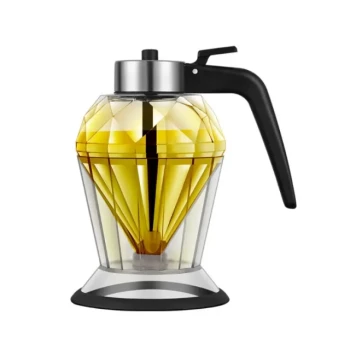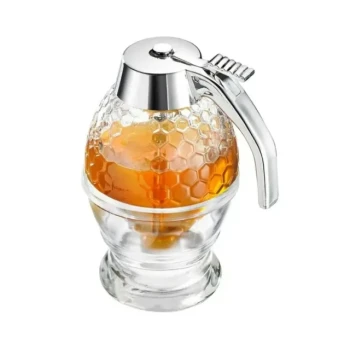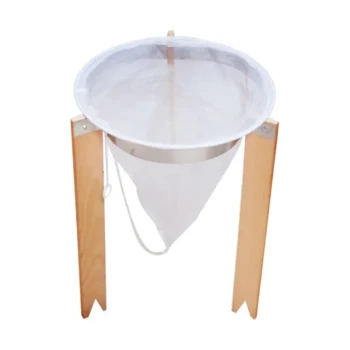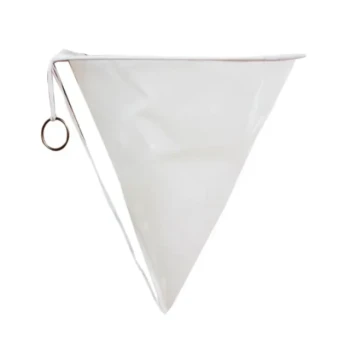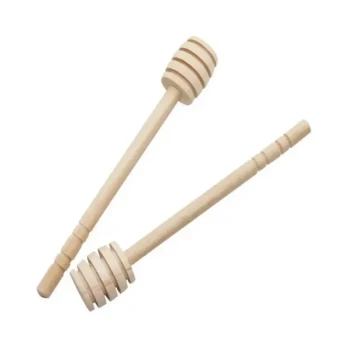Absolutely, a honey gate is a reusable tool. It is designed to last for many seasons of use. Its longevity, however, is entirely dependent on a consistent routine of proper cleaning and storage after each honey harvest to prevent damage, contamination, and failure.
Your honey gate is more than just a tap; it is a precision instrument for maintaining the quality of your honey and the efficiency of your extraction process. Proper maintenance isn't about storage—it's about protecting the value of your harvest.
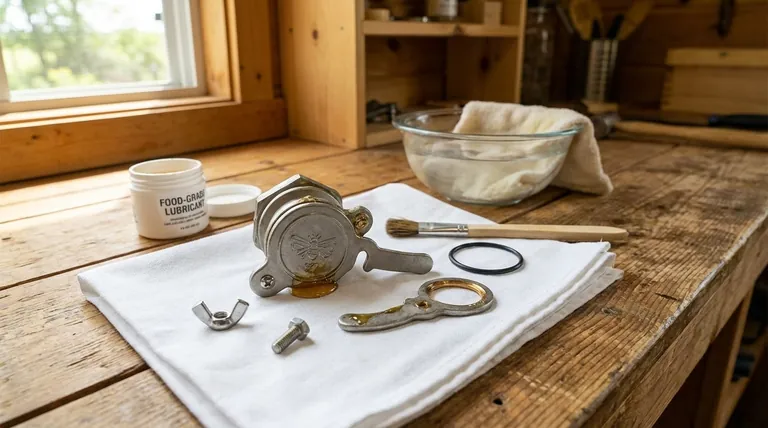
The Goal: Preserving Function and Purity
A honey gate's primary advantage is providing clean, precise control over the flow of honey, which is notoriously viscous and messy.
Improper care can lead to leaks, contamination from old crystallized honey, or complete failure of the gate, turning a simple task into a frustrating one. The goal of maintenance is to ensure it works as well on its tenth use as it did on its first.
Step 1: A Thorough Post-Harvest Cleaning
The most critical step is cleaning the gate immediately after you are finished using it for the season.
Start by gently disassembling the gate. Most models have a simple wing nut or screw that allows the handle and blade to be separated from the main body.
Rinse each component under warm, running water. Avoid excessively hot or boiling water, which can warp the plastic or damage the seal. A soft brush is ideal for removing all traces of honey and wax without scratching the surfaces.
Step 2: Ensure Components are Completely Dry
After washing, allow all parts to air dry completely. Trapped moisture is the primary cause of mold and mildew during off-season storage.
Patting the components with a clean, lint-free cloth can speed up the process, but air drying is the surest way to ensure no moisture remains in small crevices.
Step 3: Inspect and Lubricate Before Storage
Before reassembly, take a moment to inspect each part for wear and tear. Pay close attention to the O-ring or gasket, checking for cracks or brittleness. This seal is the most common point of failure.
Apply a very thin layer of food-grade lubricant to any moving parts and the O-ring itself. This keeps the seal pliable and ensures the gate opens and closes smoothly next season.
Storing Your Honey Gate for Next Season
Proper storage protects the gate from environmental damage and ensures it is ready for immediate use.
Choose a Protected Location
Store your clean, reassembled honey gate in a location protected from direct sunlight. UV exposure can make plastic brittle over time.
Also, keep it in a temperature-controlled area, away from the extreme heat or cold of a shed or uninsulated garage.
Protect from Dust and Pests
The best practice is to place the honey gate inside a sealed plastic bag or a clean, lidded container. This prevents dust accumulation and ensures no pests can access it during the off-season.
Understanding the Trade-offs: Common Mistakes to Avoid
Many well-intentioned actions can accidentally damage a honey gate or compromise its function.
The Mistake of Using Harsh Chemicals
Never use harsh detergents or abrasive cleaners. These can degrade the plastic and, more importantly, leave chemical residues that can contaminate your next honey harvest. Warm water and a soft brush are all you need.
Neglecting the Seal
The rubber or silicone O-ring is the gate's most vulnerable component. Forgetting to clean, lubricate, or inspect it will almost certainly lead to a slow, sticky leak during your next extraction.
Using the Wrong Lubricant
Do not use petroleum-based lubricants like Vaseline or standard mechanical grease. These are not food-safe and will taint your honey. Only use products explicitly labeled as food-grade silicone grease.
Making the Right Choice for Your Goal
Your approach to maintenance directly impacts your future work.
- If your primary focus is efficiency: A clean, well-lubricated gate prevents sticking and ensures a smooth, fast honey flow when you need it most.
- If your primary focus is honey quality: Proper cleaning and sealed storage are non-negotiable for preventing contamination from mold, old honey, or dust.
- If your primary focus is cost-effectiveness: This simple five-minute maintenance routine will multiply the lifespan of your gate, protecting your investment for years to come.
A little care after the harvest ensures your equipment remains a reliable asset rather than a future problem.
Summary Table:
| Maintenance Step | Key Action | Important Note |
|---|---|---|
| Cleaning | Disassemble & rinse with warm water. | Avoid harsh chemicals and hot water. |
| Drying | Air dry all components completely. | Prevents mold and mildew. |
| Lubrication | Apply food-grade lubricant to the O-ring. | Ensures a smooth operation and prevents leaks. |
| Storage | Store in a sealed bag in a temperature-controlled area. | Protects from dust, pests, and UV damage. |
Protect your harvest and your investment with professional-grade equipment from HONESTBEE.
As a trusted supplier for commercial apiaries and beekeeping equipment distributors, we understand that efficiency and product purity are paramount. Our wholesale-focused operations provide the durable, reliable tools you need for a successful season, year after year.
Let us help you streamline your operation with equipment built to last. Contact our team today to discuss your wholesale needs and ensure your next harvest is your best one.
Visual Guide
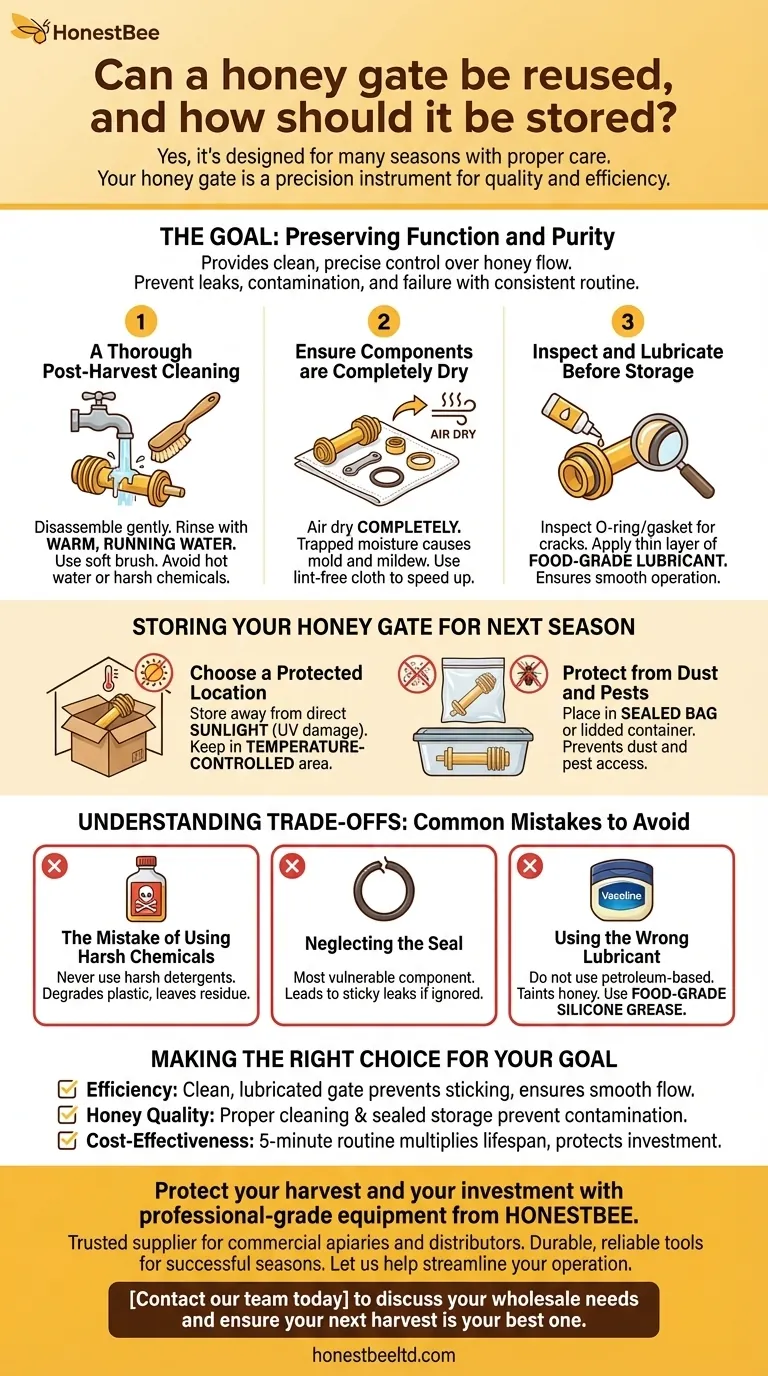
Related Products
- Stainless Steel Honey Gate Valve Tap Tool for Honey Extractor
- Honey Gate Valve with Ergonomic Ball Handle Plastic Bee Honey Tap for Beekeeping Bottling and Honey Extractor Equipment
- Premium Diamond-Faceted Glass Honey Dispenser
- Honeycomb Style Drip Free Honey Dispenser
- Inverted Squeezable Honey Jar with No Drip Flip Top Cap for Easy Pouring
People Also Ask
- What are the benefits of drying honey filtering equipment after use? Protect Your Honey Quality & Equipment Investment
- How do you adjust the flow of honey using a honey gate valve? Master Precision Control for Your Bottling Line
- What filter size for honey? A Beekeeper's Guide to Straining for Clarity and Quality
- Is refrigeration necessary for storing honey? Avoid spoiling texture and quality
- What is the role of a honey filter in ensuring purity? Achieve Clean, High-Quality Honey


